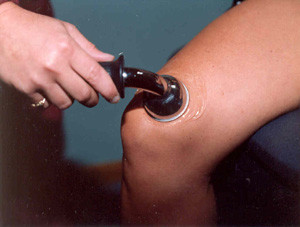|
BOOK NOW |
ASK ABOUT YOUR PAIN |
Home > Blog > Physiotherapy & Hand Therapy > Conditions > Treatments > Ultrasound Physiotherapy
ultrasound physiotherapy

Most people and patients, when they hear about "ultrasound" for their injuries, they think about the imaging ultrasound to see the baby image on the screen during their gynae check ups where they are told their baby's gender.
And that's the more common and familiar use of ultrasound...but we'd like to share with you as well that there are non-imaging, therapeutic ultrasound that we use to treat both:
- "soft tissues" like muscle injuries, tendon injuries, ligament injuries
- "hard tissues" like bone bruising, bone fractures
In fact, research have shown that it accelerates both soft tissue and hard tissue healing.
first of all, What is ultrasound?
Therapeutic ultrasound machines that our senior physiotherapists use in our physio clinics produce specialize healing sound waves that creates a healing effect on the patients'
- muscles
- ligaments
- tendons
- cartilage
- bones
And because these healing ultrasound waves are beyond the upper limit of human hearing, we can't really hear them whilst they're being effected.
The 2 most commonly used frequencies of the sound waves are 1 MHz (megahertz) and 3 MHz, which determine how deep the sound waves go. We use 3 MHz for more superficial injuries and 1 MHz for deeper ones.
These ultrasound waves travel through the skin and get absorbed by the soft tissues and bones.
so How does ultrasound help in healing?
For soft tissues such as tendons, cartilage, muscles and ligaments, there are 2 ways the therapeutic ultrasound waves work, which is:
- thermal (heating effect) and
- non thermal (non heating effect)
High intensity continuous ultrasound can cause the tissues to have a heating effect.
What this does is this heating effect causes the surrounding blood vessels to expand, improving the blood circulation to that area. The heat also increases the metabolic rate of the cells of the soft tissues, increasing its healing capability.
This needs to be used cautiously, because in the event of acute (fresh) injuries to the soft tissues or bony tissues, using a heating element can increase the inflammation, which is not something that we want because that will cause the inflammation to become worse.
For acute injuries, we need to use low intensity pulsed ultrasound is preferred which increases the cellular activity of the injured soft tissue and promotes a faster healing, without the detrimental effects of heating.
eh...I felt nothing during the treatment, does it really work?
During the treatment, patients typically will not feel much. The most that you may feel during a session is mild warmth.
Evidence for Ultrasound
As for the efficacy of ultrasound therapy in the healing of soft tissues, there is unfortunately no conclusive consensus on its therapeutic effects.
Current research suggests that effective
evidence based application of ultrasound is highly dependent on
therapist knowledge and appropriate training in ultrasound application, which is very important and why we only work with very experienced senior and principal physiotherapists in Phoenix Rehab physio clinics.
It remains a popular choice for physiotherapists mainly due to its clinical effectiveness reported by many clients. Patients and doctors anecdotally report effectiveness in 50-75% of the cases when ultrasound physiotherapy is applied.
Strong Evidence for use of ultrasound in fracture healing
There is very strong evidence in recent research to show that low intensity, pulsed ultrasound, started seven days after a diagnosed fracture of the bone, applied daily for one time of 20 minutes each time, can induce healing of the bones and reduces the healing time by 20-40%.
Should you wish to find out more about ultrasound and how It may help you, please feel free to get in touch
References
- Nussbaum, E.L. (1997). Ultrasound: To heat or not to heat-that is the question. Physical Therapy Review, 2, 59-72.
- Watson, T. (2008). Ultrasound in contemporary physiotherapy practice. Ultrasonics, 48, 321-329.
- Dyson, M. (1987). Mechanisms involved in therapeutic ultrasound. Physiotherapy, 73(3), 116-120.
- Heckman et al. (1994). Acceleration of tibial fracture0healing by non-invasive, low intensity, pulsed ultrasound. The journal of Bone and Joint Surgery Am, 76:26-34.